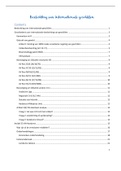Summary
Samenvatting Beslechting van Internationale Geschillen VUB 20-21
- Course
- Institution
- Book
Volledige samenvatting, geschreven met notities vanuit de les (aanwezig tijdens elke les). Enkel dit geleerd voor het examen en behaalde een 16.
[Show more]




